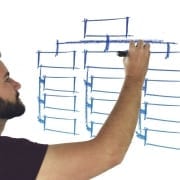The Boomers are Leaving! – How to Create and Implement a Knowledge Transfer Program, part 2
Now that you’ve looked at your workforce (in The Boomers are Leaving! – How to Create and Implement a Knowledge Transfer Program, part 1), you’re ready to design and develop a program that retains Baby Boomers’ knowledge. But your program should do more than just capture and transfer valuable knowledge – it should also sow the seeds of a knowledge culture in the organization. More on that later. For now, let’s look at the four phases that will follow the organizational analysis you read about in Part 1. Like rungs on a ladder, each phase builds on the next, so it’s important that you consider each step as you create your knowledge retention program.
Design: During the design phase, you’ll use the workforce data you collected and focus on who holds the knowledge, the recipient, the knowledge you want to capture, and the method you want to use. Some knowledge transfer methods to consider are mentoring, social networks, Communities of Practice, After Action Reviews, and storytelling programs. From this point on, it is critical that you follow the needs of your audience. Regularly ask yourself these questions:
Hi there! This article is available for free. Login or register as a StrategyDriven Personal Business Advisor Self-Guided Client by:
Subscribing to the Self Guided Program - It's Free!
About the Authors


For more information about Ball and Gotsill and Surviving the Baby Boomer Exodus (Course Technology PTR, Cengage Learning 2010), please visit their website www.survivingtheboomerexodus.com.










The “knowledge transfer” you talk about here is not only a great idea, but a necessary one. The baby boomers have gained so much intellectually. This wealth of knowledge and experience must be passed down for us to carry on those tasks, as you imply here. Great ideas, I am sure this is coming in handy for many businesses and organizations. Thanks for sharing!
Become a Facebook fan for discounts on Baby Boomer products and more